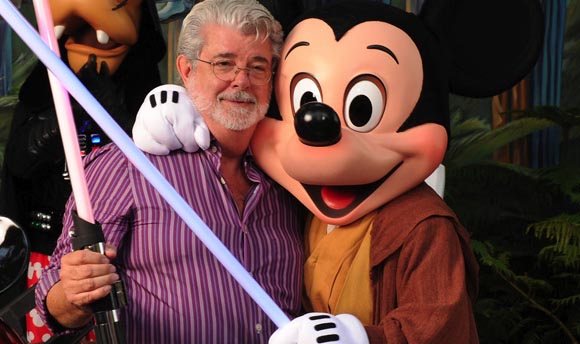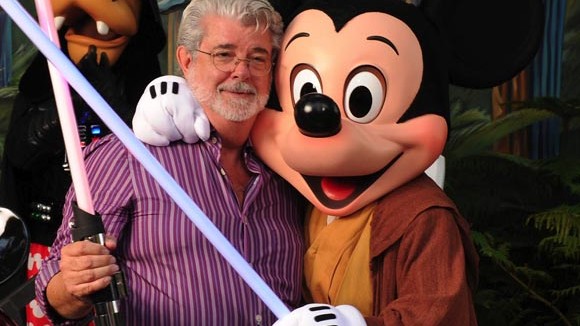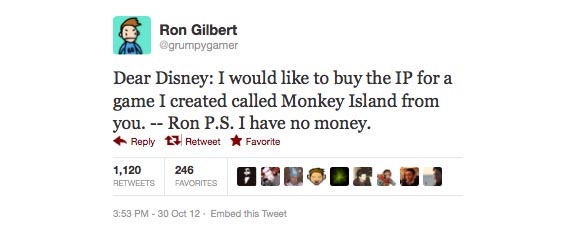

The Disney Purchase of Lucasfilm: What Does It Mean?

Disney’s $4.05 billion acquisition of Lucasfilm has generated more questions than answers. The Mouse has made it clear that they bought Lucasfilm for one thing, and one thing only: the Star Wars property.
But Lucasfilm’s business also includes other components such as Skywalker Sound and the visual effects studio Industrial Light and Magic (ILM). The fate of these entities remains unknown and will likely remain so for the foreseeable future.
For example, what to make of ILM’s promising start as a producer of animated features? Don’t forget that ILM’s first original film Rango won an Oscar earlier this year for Best Animated Feature. But Disney already owns its own feature animation studio as well as Pixar. It hardly needs a third studio, especially one that offers an original take on computer animation that could make the work of its other studios look formulaic by comparison. In other words, it’s a likely bet that ILM won’t be making any more animated features of its own.
However, ILM will likely continue creating the visual effects for the Star Wars films that Disney plans to start releasing in 2015. According to Variety:
On the Star Wars movies, Lucasfilm has long relied on having the resources of ILM inhouse to control vfx costs. A Lucasfilm spokesman said [Kathleen] Kennedy will continue to have autonomy to use ILM on future Star Wars films. However, that doesn’t guarantee that all work will be done in San Francisco. ILM has offices in Singapore and Vancouver and has alliances with companies in Beijing and Europe. It will continue to leverage those alliances and offshore locations to keep costs down.
And what about the visual effects work that ILM creates for other studio’s films? In his initial statements, Disney chairman-CEO Robert Iger gave a less than ringing endorsement of ILM’s business model.
The LA Times quoted Iger saying, “Our current thinking is that we would let it remain as is. They do great work. They do work for multiple studios. It’s been a decent business for Lucasfilm and one we have every intention of staying in.” The emphasis on the words ‘current’ and ‘decent’ are mine, and it’s not too difficult to read between the lines, especially when the NY Times added that Iger wants to “reap the value” it can from ILM.
History is not on ILM’s side either. In 1996, Disney acquired another respected visual effects studio DreamQuest. It merged it with its own in-house computer animation department and renamed it The Secret Lab. The Lab’s most notable effort was the feature film Dinoasur before the division was shuttered in 2002. It will be tougher to dismantle ILM, but there’s a good chance that Disney will explore some type of reorganization/merger/consolidation/sale of the studio in the coming years.
The same questions exist to a lesser degree for Lucasfilm’s storied gaming division, LucasArts. That division has struggled in recent years, as the LA Times reported:
LucasArts is currently operating without a permanent president and has not made a new game since 2010’s poorly received “Star Wars: The Force Unleashed II.” This year it announced a new title in the works, “Star Wars: 1313,” but because that game is intended to carry dark themes and be rated M (the video game equivalent of R), it may not fit into Disney’s intent to position “Star Wars” as a family entertainment brand.
Despite its recent missteps, LucasArts (and now Disney) owns a back catalog of beloved gaming classics like The Secret of Monkey Island, Grim Fandango, Full Throttle and Maniac Mansion. It’s hard to imagine what Disney will do with those titles, though Monkey Island creator Ron Gilbert tweeted a tongue-in-cheek suggestion earlier this week:

Finally, the question that many are asking is how George Lucas will spend his newly earned wealth. Lucas, who was already a billionaire before the sale, is now officially the wealthiest artist in the United States. Because he owned 100 percent of Lucasfilm, he will receive the entire $4 billion himself, roughly half in cash and the rest in Disney stock, turning him into Disney’s second-largest non-institutional shareholder with approximately 2.2% of the company.
It might be expected that Lucas would spend his money on silly douchebag toys—Lucas has reportedly spent millions on picture frames for his vintage European movie poster collection—but instead he plans to do something far more worthwhile with the bulk of his cash: philanthropy.
Education is a passion for Lucas, and he made a pledge in 2010 to dedicate the “majority of my wealth to improving education.” After this week’s sale to Disney, Lucas reiterated that goal. “As I start a new chapter in my life,” he said, “it is gratifying that I have the opportunity to devote more time and resources to philanthropy.” If he ends up following through on the pledge, this may end up being one of the few corporate mergers that has a happy ending after all.

.png)